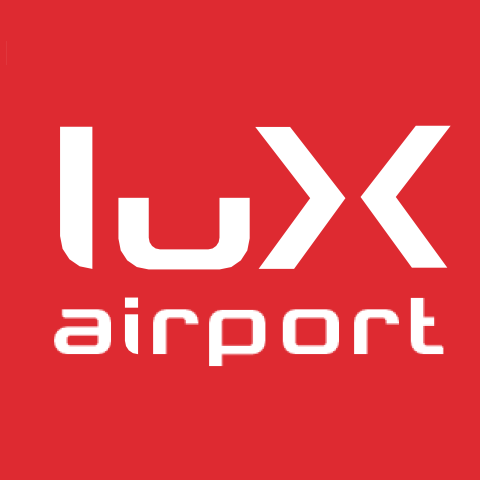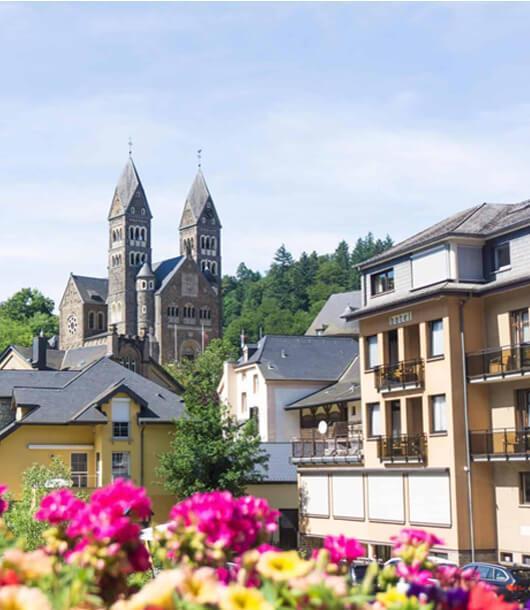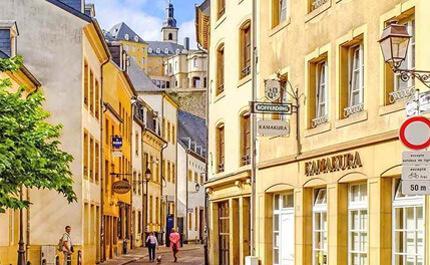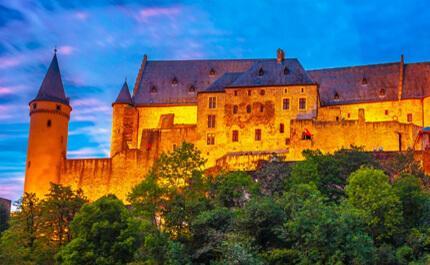As an essential component of the overall Master Plan for the airport currently under development, the Master Plan for the landside area in front of the terminal was unveiled at a press conference on 28 June 2016. The so-called Airport City Master Plan comprises the area between the terminal and the Grand Ducal Golf Club on the one side, and the intersection at the IBIS Hotel to the roundabout at the power plant on the other.
The purpose of the development project is to provide the required infrastructure and facilities which have become absolutely necessary owing to the strong growth in the number of passengers in recent years and to take account of the medium- and long-term growth forecasts for the airport, plus facilities which supplement the infrastructure already available in the terminal.
All this takes the basic mission of lux-Airport to develop the land it owns – not least in order to generate income so as to secure the financial independence of the company and to be able to pursue future tasks in line with the numbers of passengers increase.
Pursuant to the Airport City Master Plan, some 4,100 new parking places will be provided some 4,100 new parking places in several stages, around 1,200 of which in a so-called XXL car park with commensurately sized parking places at the current Parking F. The first steps of the implementation of the master plan are already perceptible in the soon to be completed expansion of the short-term parking places (Kiss & Fly) in front of the terminal.
The approach road to the terminal will essentially be lined with offices and parking places for employees of companies located at the airport. These parking places are linked with the terminal and the existing underground car park by means of an underground passage. Some local shops accessible to the public and service facilities such as dry cleaning, an Airport Service Center, etc. are also located here. This underground passage also provides covered access to the XXL car park, and is provided with natural light through the large skylights and panorama windows with a view of the apron at the airport.
The area between the N1 road and the Grand Ducal Golf Club (Parking E) that has been used only as an above-ground parking facility up to now, will be built up in stages. The centrepiece here is a building complex that will comprise a hotel, a business club and a fitness studio, linked directly with the terminal aboveground and underground.
All parking places in the immediate vicinity of the terminal are to be connected in future via underground passages without road crossings and protected from weather conditions.
A green area laid out in the middle of the Airport City will make the surrounding buildings accessible on foot again and invite passers-by to linger.
A data centre built according to the latest techniques and ecological considerations will be integrated in the existing shell construction of the originally planned underground station. The location, infrastructure connection, cubic volume and layout were identified as ideal in several studies. Concrete implementation concepts will be analysed and assessed in the coming weeks.
The tram is slated to provide an above-ground, direct connection to the terminal at the location of the current bus stops in 2021. Passengers will thus be able to reach the departure hall conveniently without having to cross streets or change levels.
In parallel to the tram connection, the terminal curbside will be connected to the cargo centre on the motorway access heading east, so that traffic can be divided between two motorway junctions during rush hour.
The positive growth figures for the airport make the implementation of the Airport City Master Plan indispensable. Facilities are accordingly being created to supplement the existing offer and to enhance the comfort of passengers and employees of companies active at the airport, but also the users of the growing number of buildings in the surrounding area.
According to current estimates, more than 24,170 jobs depend directly or indirectly on the airport at this time, and the trend is on the rise. The contribution to the Gross Domestic Product was ca. 5% in 2015 – reason enough to consider the airport and the surrounding buildings as the “Airport City” rather than “peripheral area” in future, as real estate agents sometimes call the airport area.






